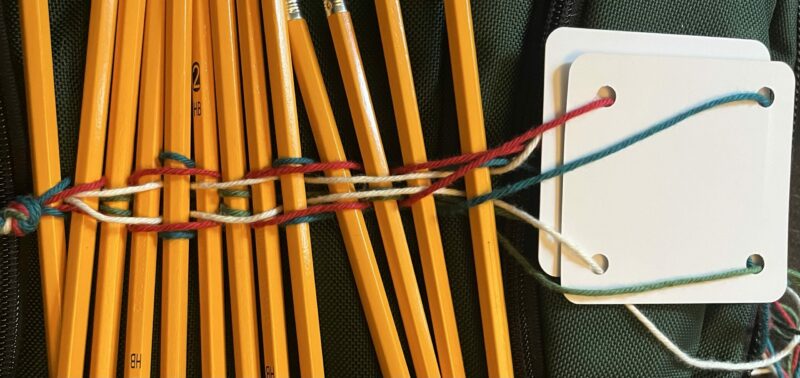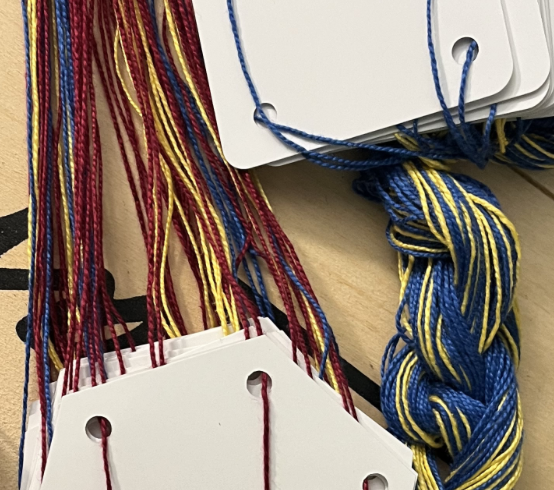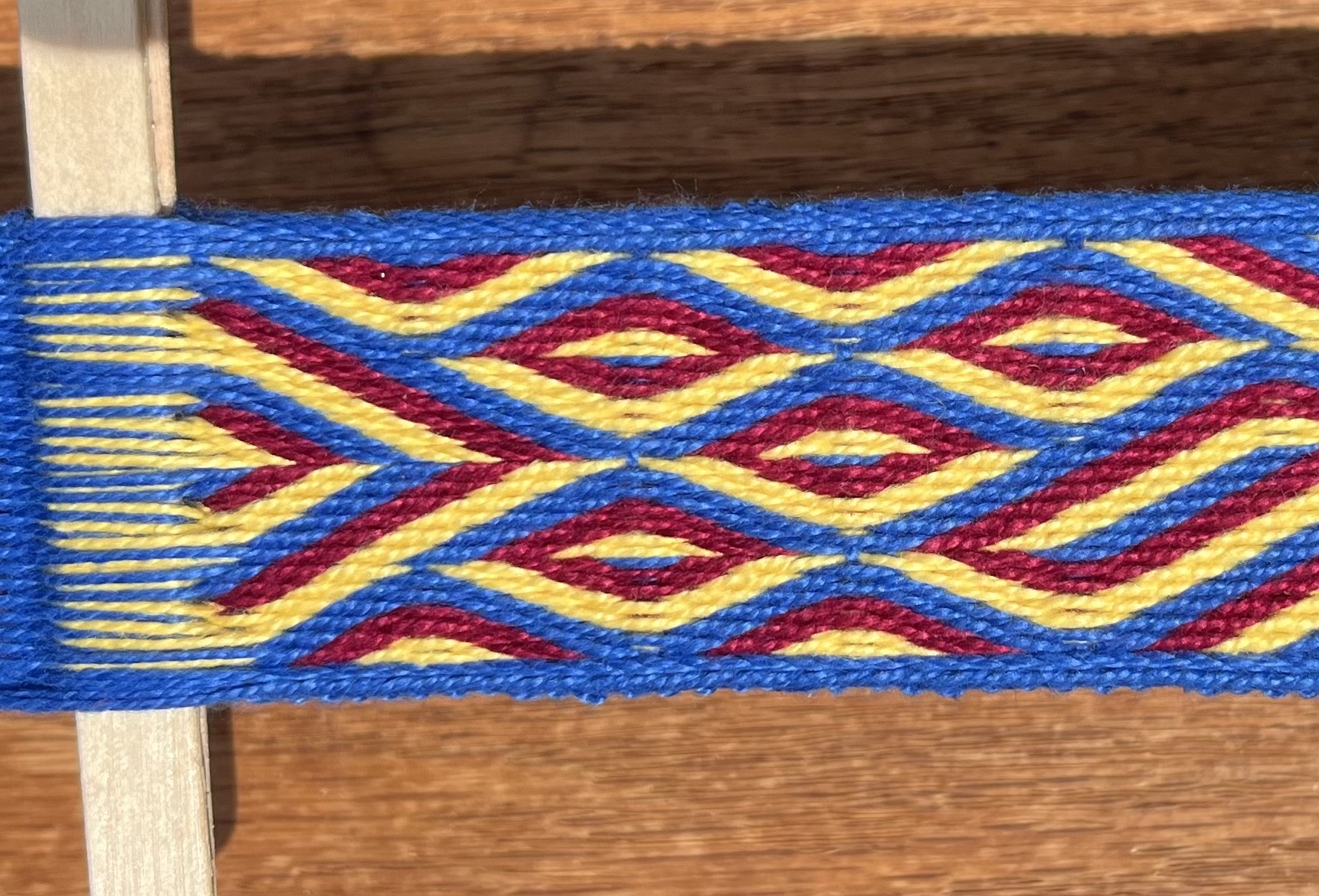All you need for tablet weaving is something to tie both ends of the warp to. A pair of chairs will do it, or anything you can put some tension on. But there are so many other options out there. How to choose?
A lot of the decision comes down to personal preference, which means you have to try a lot of things before you know what works for you, based on weaving style, technique, body mechanics.
Backstrap gives the most adjustability for tension. There’s something to be said for decreasing tension to turn the cards or pick up brocade warps, and increasing it to beat. But it limits mobility, and not everyone is physically capable of working that way.
The post looms are simple, and the weaver can sit next to or behind the loom. The cards tend to flop sideways, but for some techniques that’s actually an advantage. The two C-clamp version is the cheapest and easiest beginner loom available: two C-clamps and a length of board or 2×4. Tie your warp between the bar of the clamps.
Inkle looms can be very useful, but restrict the available warp length, and are inappropriate for a lot of historical demos.
I have a very simple board loom that uses the board itself as one of the tensioning blocks. This is my favorite
loom.


It was designed for two-hole weaving, so the cards are supported by the loom base. If you want space between the bottom of the cards and the board, or if you prefer larger cards, you could use two blocks.
A warp-weighted setup is great for projects with twist buildup. I’ve even clamped one end of the warp to a table and let the weighted ends hang down over a chair back. This is not at all portable, nor is it compatible with cats or small children.
Fishing swivels can accomplish the same thing. I find them far too fiddly to bother with, but some people like them.
There are a number of pipe loom variants floating around. I use a PVC loom for teaching that doubles as a warping board, comes apart into pieces, and can be made cheaply and easily. I have a nifty tensioning system that is also easy, and can give very high and infinitely adjustable tension. (Yes, writing it up is on the to-do list.) There are a couple of them on the floor in this photo.

Then there are the fancier commercial looms, box looms, etc. Things to consider include expense, portability, historical authenticity, weaving length (especially if you favor multi-pack methods), whether you want to sit beside or behind the working area, how often you are willing to untangle the twisted warp threads, and so on.
What’s your favorite loom?






One response to “Tablet weaving looms”
I learned by tying the far end of the warp to a chair and the near end to my belt, but that put so much strain on my lower back that for a long time I did no tablet weaving whatsoever.
Recently, I got one of these for Christmas; Lynn the Weaver makes them. I started a project just tonight, and I think that I will like using this frame a lot better than the backstrap method.